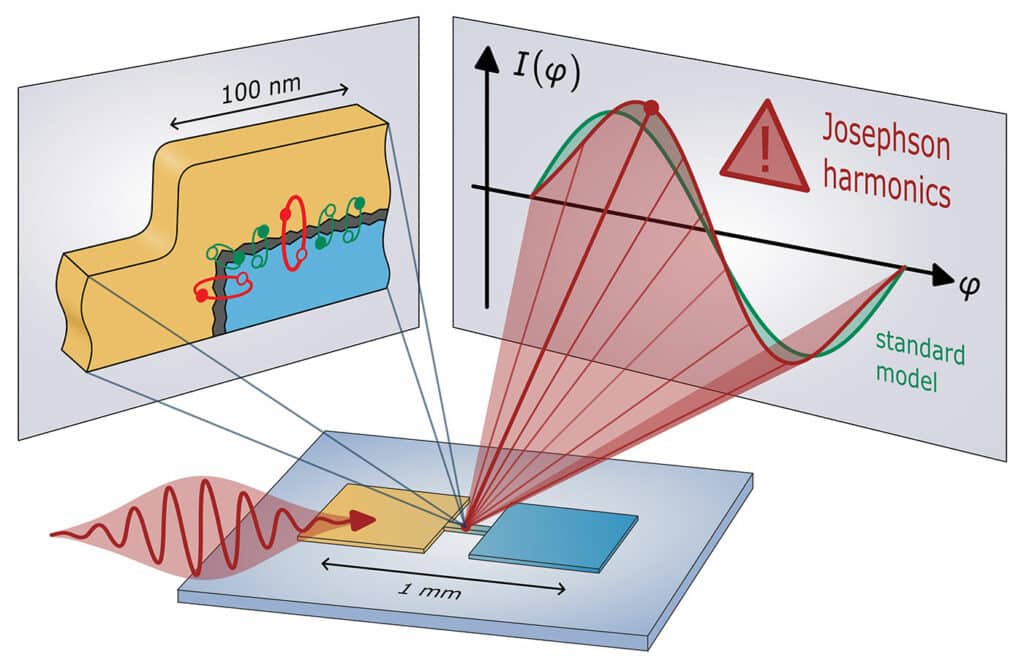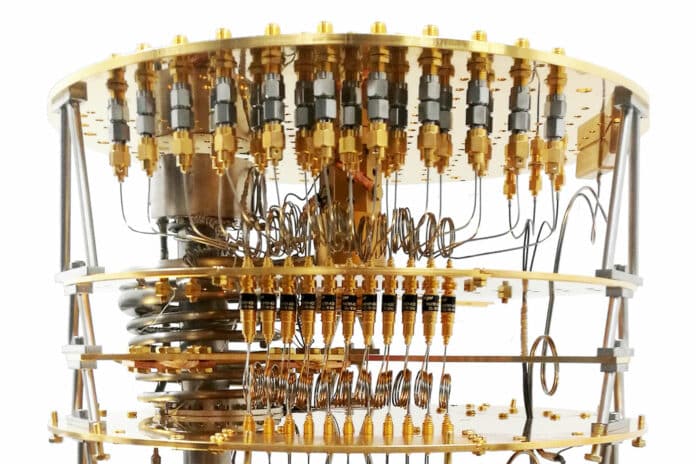Physicists from Forschungszentrum Jülich (FZJ) and the Karlsruhe Institute of Technology (KIT) have discovered that Josephson tunnel junctions, which are the basic building blocks of superconducting quantum computers, are more complex than previously believed.
They have found that harmonics, similar to overtones in a musical instrument, are superimposed on the fundamental mode. Therefore, corrections may result in quantum bits that are 2 to 7 times more stable.
The story began in 2019 when Dr. Dennis Willsch and Dennis Rieger – two Ph.D. students from FZJ and KIT at the time and joint first authors of the paper – had difficulties understanding their experiments with the standard model for Josephson tunnel junctions. To get to the bottom of this, the team led by Professor Pop examined additional data from various laboratories across the world, including the Ecole Normale Supérieure in Paris and a 27-qubit device at IBM Quantum in New York.
A Josephson tunnel junction consists of two superconducting electrodes, the so-called base and top electrodes, which are connected by an insulating barrier of a few atomic layers of thickness. These circuit elements have been described with a simple sinusoidal model for decades.

Developing large-scale superconducting quantum processors presents a challenge due to the microscopic degrees of freedom that exist in solid-state devices. To perform quantum operations, state-of-the-art superconducting qubits use aluminum oxide (AlOx) tunnel Josephson junctions as sources of nonlinearity.
However, the researchers have discovered that this “standard model” falls short of accurately describing the Josephson junctions used to build quantum bits. Instead, a mesoscopic model of tunneling, including higher harmonics, is required to accurately describe the tunneling current between the two superconductors. This phenomenon is analogous to musical instruments, where striking a string produces not only the basic tone but also several overtones that enrich the sound.
“It’s exciting that the measurements in the community have reached the level of accuracy at which we can resolve these small corrections to a model that has been considered sufficient for more than 15 years”, Dennis Rieger remarks.
“As an immediate consequence, we believe that Josephson harmonics will help in engineering better and more reliable quantum bits by reducing errors up to an order of magnitude, which brings us one step closer towards the dream of a fully universal superconducting quantum computer,” the two first authors conclude.
Journal reference:
- Dennis Willsch, Dennis Rieger et al. Observation of Josephson harmonics in tunnel junctions. Nature Physics, 2023. DOI: 10.1038/s41567-024-02400-8
